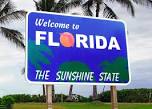No matter how much Tom Steyer spends, Florida isn’t buying climate disaster

By Patrick J. Michaels
The legendary bank robber Willie Sutton apparently did not say that he robbed banks “because that’s where the money is,” even though everyone thinks he did. And, apparently, rich donors also don’t identify issues that are “where the voters are,” at least in Florida.
Billionaire Tom Steyer has spent $12 million trying to make Floridians scared of global warming — an issue Gallup recently found ranks dead last among voter priorities. Other research indicates that the more people are harangued about it, the more they turn off, making this money not well spent.
Blame the information age, where people can easily see for themselves that we are in our 18th year without a global-warming trend. They can also go the National Climatic Data Center’s website and plot out Florida’s yearly temperature; there is no overall significant warming trend in the entire record, which covers 118 years.
Tom Steyer has spent $12 million warning Floridians about global warming.
A little advance work could have saved a ton of money. The most popular climate change website in the world, Anthony Watts’s www.wattsupwiththat.com, now has well over 200 million views. It is decidedly nonapocalyptic. The most prominent scare site, RealClimate.org, has a hundred times fewer views.
Watts’s site is run on a shoestring. While some of Steyer’s ads blame the Koch Brothers for skepticism about the end of the world, Watts has never seen a dollar of their support — or, for that matter, many dollars of anyone’s support, as it is mostly run with a tip jar.
Here’s the cool part: According to the model the Environmental Protection Agency uses to assess the climatic effects of various policies, if the emissions from the entire state of Florida dropped immediately to zero, the amount of global warming that would be saved by the year 2100 would be a grand total of seven thousandths of a degree Celsius (0.007°C). Such action would cost the Florida economy a fortune — even more money down the climate rat hole.
And thanks in no small part to the nearly two decades without any warming, it looks as though the amount the EPA assumes will occur this century was substantially exaggerated.
Some of Steyer’s ad footage clearly conflates warming and tidal inundations caused by hurricane winds. The fact is a lot of people in Florida don’t remember the last big (Category 3 or higher) one, Hurricane Wilma, which made landfall in Florida on Oct. 24, 2005. In fact, Wilma was the last such Category 3 to strike in the entire U.S., 3,292 days ago. This is the longest that the country has gone without such a storm since the Civil War era, and 23 days from now, we will be in the longest major hurricane drought in our recorded history.
The truth of the matter is, the planet is warmer than it was, and there’s some evidence that people have something to do with it. It just doesn’t have anything to do with hurricanes and their brethren around the entire planet, nor is it strong enough to even induce a significant warming trend in the overall Florida record.
Incidentally, the hallmark of warming from carbon dioxide (recent years notwithstanding) is that the coldest air masses of the winter are what warm the most. These are what freeze Florida’s orange crop. One notorious 1977 freeze, dubbed The Siberian Express, actually put down snow in Miami, for the first and only time since good weather records have been kept.
As Casey Stengel would have said, “you could look it up,” which is precisely what people do when hectored about the upcoming climate apocalypse. People my age have lived through about nine such apocalypses. “Acid rain” seems so quaint now, doesn’t it?
The reason voters rank global warming dead last is because they are tired of these false apocalypses. They are suffering from apocalypse fatigue, something well-heeled political donors would do well to recognize. Throwing money at exaggerated disasters may cost more votes than it buys.
Patrick J. Michaels is director of the Center for the Study of Science at the Cato Institute.







